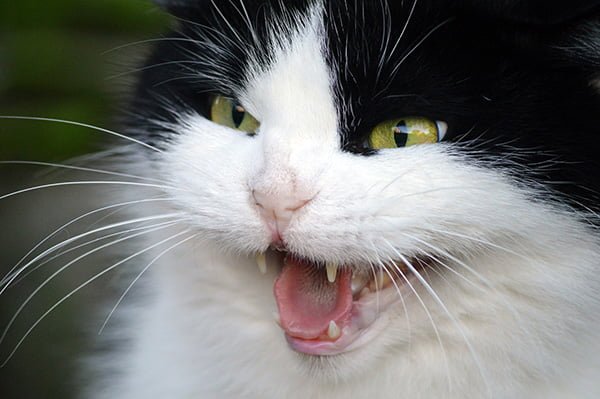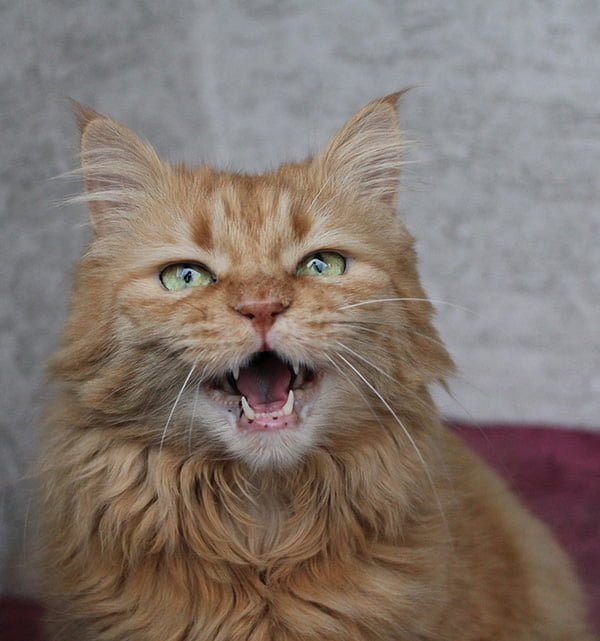Cats possess a unique and enigmatic nature that can often leave their human caregivers wondering about their inner thoughts and emotions. Though not inherently talkative, cats have learned to convey their needs and desires through various vocalizations and body language. But decoding these signals can be challenging, as the subtleties of feline communication can be easily missed.
It is essential for cat parents to strive for a deeper understanding of their feline friend's language. By paying closer attention to the cues they give, you can gain valuable insights into their emotions and needs, fostering a stronger bond and a happier, healthier cat.
As pet parents, it's natural to be concerned when your feline companion makes unexpected vocalizations. One such noise that may raise the alarm is a cry or whimper, leading to the question: can cats truly cry? And if so, what could be causing this distress? In this guide, we will delve into the potential reasons for a crying cat and what steps can be taken to address the issue and ensure the well-being of your beloved pet.
Can Cats Cry Tears?
Cats can produce tears, but they do not typically "cry" like humans do. Tears in cats are produced by the lacrimal glands located in the inner corner of the eye and are responsible for keeping the eyes lubricated and healthy. A cat's tear ducts drain the tears into the nose, and excess tears can cause a condition called epiphora, where the tears overflow and run down the face.
Cats do not, however, produce tears as an emotional response when they are sad like humans do. When cats attempt to communicate their emotions, they typically use a variety of sounds instead.
The Different Types of Cat Cries
Cats can actually produce a multitude of different sounds, each having a different meaning. The different types of cat vocalization include meowing, growling or hissing, chirping, purring, and moaning.
Meowing
One of the most common forms of cat communication with humans is meowing, a sound often associated with cats expressing their needs and desires. The cat’s meow is their way to communicate with you, like "hello" or "feed me." Indoor cats can meow or "cry" to get you to let them outdoors. Therefore, knowing your cat's meow is essential.
However, a cat meow excessively can often raise questions among cat owners. If your feline friend is making repetitive, long meows with prolonged eye contact, it's likely that they are trying to communicate something specific to you. This could be anything from asking for attention or wanting to go outside to signal that they are hungry. While excessive meowing is not typically a sign of any serious issues, it can be rooted in stress or confusion in older cats.
Pay close attention to your cat's behavior and vocalizations is important, as understanding their unique language can provide valuable insights into their emotions and needs.
Purring
Purring is the next most common cat-produced sound. Cats commonly purr when snuggling or being petted, which is a comforting sound that means the cat is happy and feels content.

Source: Pixabay
Growling And Hissing
While meowing is the most common sound associated with cats, growling and hissing is less frequently heard but are powerful indicators of a feline's state of mind.
Growling and hissing are classic warning signs that your cat feels threatened or uncomfortable in their current environment. These sounds are often associated with anger and should be taken seriously. As a pet parent, it's crucial to assess the surrounding environment and identify any potential sources of stress or discomfort.
Common triggers for growling and hissing include introducing new animals or people to the home, being cornered, or feeling protective over food or toys. By understanding the reasons behind these vocalizations, you can take steps to create a safe and secure environment for your feline companion.
Moaning
One sound that may be cause for concern is a moan or wail, often referred to as "caterwauling." A distinctive, shrill, high-pitched howl-like sound characterizes it. While this noise is typically associated with female cats in heat, it can also indicate the presence of an underlying medical issue or injury.
It's important to note that cats, like all animals, have their own unique personalities and may express themselves differently. If you notice your cat making a moaning sound and it's not related to mating behavior, it's best to consult with your veterinarian to rule out any potential health concerns. By staying attuned to your cat's vocalizations and seeking professional guidance when necessary, you can ensure the well-being and happiness of your beloved pet.
Chattering or chirping
This is a type of vocalization that cats make when they are observing birds or other prey. It is a high-pitched, staccato noise that sounds similar to a bird's chirping. A cat's rapid jaw movement makes the sound, often accompanied by twitching the tail and ears.
This type of vocalization is typically observed in indoor cats watching birds through a window or outdoor cats stalking prey. The chattering may be a sign of a cat's natural hunting instincts being triggered, even if the cat cannot catch the prey.

Source: Pixabay
Why Might a Cat Cry?
Pet owners need to understand that cats are not always forthcoming with their discomfort or pain. Crying or tearing can be a subtle sign that something is amiss with their health. Pay close attention to your feline friend's behavior and consult with a veterinarian if you notice any unusual crying or tearing.
It's important to note that cats crying tears does not necessarily indicate sadness but rather can be a physical response to a variety of issues. Here are some possible issues:
Allergies
Like humans, cats may have tears or itchy eyes due to an allergic reaction. Allergies can be caused by environmental changes (hair, dandruff, dust, air fresheners, laundry detergent, etc.), the protein source of their food, or seasonal, especially if it is an indoor/outdoor cat.
Cat Flu
An upper respiratory infection (URI) is often referred to as the "cat flu." This virus can cause teary eyes, along with a number of other symptoms, including lethargy, fever, lack of appetite, and nasal discharge.
Eye Infection
If your cat is suffering from an eye infection, you may see a number of other symptoms, including redness and swelling of the eye(s) and discharge from the eye(s). They may also show some discomfort by rubbing their eyes or sneezing.
Glaucoma
Glaucoma is an eye disease caused by the body's inability to properly drain the fluid around the eyes surrounding the lens and cornea. This can be caused by either an injury or an anatomic abnormality. Because of this disease, the eye cannot drain, causing a watery discharge to remain in the eyes.
Corneal Ulcer
Keratitis, or a corneal ulcer, is an open wound on the outer layer of the eyeball. This can cause a red, watery, blood-shot eye and is often caused by an infection or an injury.
Irritation
If there is a scratch on the eye or a foreign object (such as dust, fur, or an eyelash), the body's natural response is to produce tears in order to remove the object.
While cats may cry tears in response to a painful or uncomfortable situation, it is a natural physical reaction caused by the discomfort and not an emotional response. They may, however, cry vocally through excessive meowing, howling, or groaning to express emotional and/or physical communication. If your cat is showing strange behaviors, it is important to bring them to your veterinarian for a professional examination and treatment.
Stress
Crying or excessive meowing can be a sign that your cat is experiencing stress or anxiety. If you notice a sudden increase in vocalizations, it's important to take a closer look at your cat's environment and daily routine to identify potential stressors.
Common causes of stress in cats include changes in their routine or living environment, the introduction of new people or pets, and lack of access to necessities such as a litter box or water bowl. It's essential to address these issues as soon as possible to ensure the well-being of your beloved pet. If you're unsure of the cause of your cat's crying, it's always best to consult with your veterinarian for a professional diagnosis and treatment plan.
Loneliness
Adult cats don't typically use meow to communicate with each other, but just at people. If kittens meow, it's their way of letting their mother know they are cold, scared, or hungry. But if the mother is not in the picture, the crying sound is a way for them to communicate with you that she's scared, hungry, or needs attention.
Both adult cats and kittens may cry out of loneliness. If your cat is crying excessively, it may be a sign that they are feeling lonely, isolated, or suffering from separation anxiety. In this case, it is important to provide your cat with plenty of socialization and interaction to ensure they feel happy and fulfilled. Consider having a pet sitter come to visit and play while you are away.
Mental Confusion
Cats, like humans, can experience cognitive decline as they age. This can manifest in various ways, including disorientation and crying out for seemingly no reason, particularly during the night.
If you notice your aging cats or senior cats exhibiting these behaviors, it may be helpful to provide a nightlight to alleviate their confusion and provide them with a sense of security. Additionally, consulting with a veterinarian to rule out any underlying medical issues and to discuss possible management options would be recommended.
